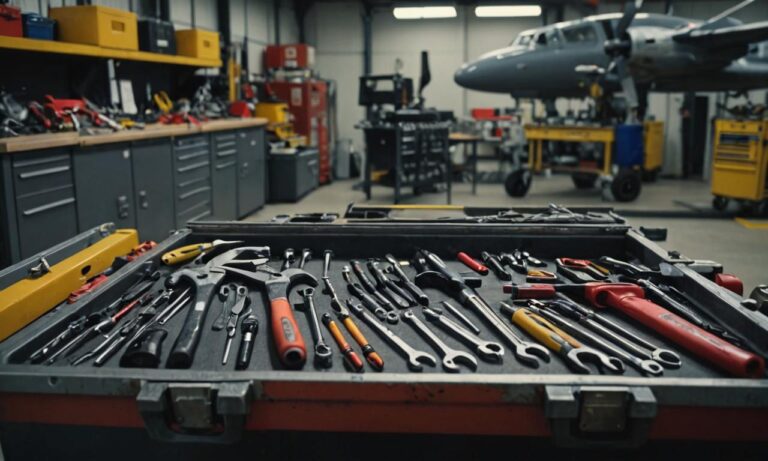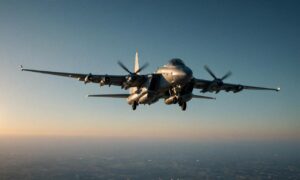Are you interested in pursuing a career in aircraft maintenance? If so, you’ve come to the right place. In this guide, we’ll provide you with valuable insights and steps on how to embark on this exciting journey.
Understanding Aircraft Maintenance
Aircraft maintenance involves ensuring the safety and airworthiness of airplanes and helicopters. It encompasses various tasks, including inspections, repairs, and troubleshooting of mechanical and avionic systems.
Educational Requirements
While a high school diploma is the minimum requirement for entering this field, obtaining a relevant certificate or degree significantly enhances your prospects. Consider enrolling in an aviation maintenance technology program offered by reputable institutions or technical schools.
Gain Hands-on Experience
Hands-on experience is invaluable in aircraft maintenance. Seek apprenticeships, internships, or entry-level positions in aviation maintenance facilities. These opportunities provide practical exposure to aircraft systems and operations.
Acquiring Certifications
Certifications are essential for demonstrating proficiency and competence in aircraft maintenance. Pursue certifications such as the Airframe and Powerplant (A&P) license issued by the Federal Aviation Administration (FAA). This license qualifies you to perform maintenance, repairs, and inspections on aircraft.
Prepare for Examinations
Successfully passing the FAA examinations is crucial for obtaining the A&P license. Dedicate time to study and familiarize yourself with the material covered in the exams. Utilize study guides, online resources, and practice tests to enhance your preparation.
Continuing Education
Aircraft technology evolves rapidly, requiring maintenance professionals to stay updated with the latest advancements. Engage in continuous learning by attending workshops, seminars, and specialized training programs. This ensures that you remain competent and competitive in the field.
Building a Strong Network
Networking plays a vital role in career advancement. Connect with industry professionals, mentors, and peers through aviation forums, conferences, and social media platforms. Building a strong network can provide valuable insights, career opportunities, and professional support.
Seek Mentorship
Find experienced professionals willing to mentor and guide you in your career journey. Their expertise and advice can offer invaluable insights, helping you navigate challenges and make informed decisions.
Join Professional Organizations
Consider joining professional organizations such as the Aircraft Maintenance Technicians Association (AMTA) or the Professional Aviation Maintenance Association (PAMA). These organizations offer resources, networking opportunities, and professional development initiatives for aspiring and seasoned maintenance professionals.
Applying for Jobs
Once you’ve acquired the necessary qualifications and experience, start applying for aircraft maintenance positions. Tailor your resume and cover letter to highlight relevant skills, certifications, and experiences. Utilize online job boards, company websites, and industry-specific platforms to explore job opportunities.
Prepare for Interviews
Prepare thoroughly for job interviews by researching the company, practicing common interview questions, and showcasing your technical knowledge and problem-solving skills. Demonstrate your passion for aircraft maintenance and your commitment to safety and excellence.
Embrace Continuous Growth
Embark on a journey of continuous growth and improvement in your aircraft maintenance career. Stay curious, adaptable, and proactive in pursuing new challenges and learning opportunities. Remember that dedication and perseverance are key to long-term success in this dynamic field.
By following these steps and staying committed to your goals, you can successfully enter and thrive in the field of aircraft maintenance.
Ensuring Safety and Compliance
One crucial aspect of aircraft maintenance is ensuring compliance with safety regulations and industry standards. Familiarize yourself with regulatory requirements set forth by authorities such as the Federal Aviation Administration (FAA) or the European Aviation Safety Agency (EASA). Adhering to these standards is essential for maintaining the airworthiness of aircraft and ensuring passenger safety.
Utilizing Advanced Technologies
As aircraft technology advances, familiarity with advanced maintenance technologies becomes increasingly important. Stay updated on the latest tools and technologies used in aircraft maintenance, such as predictive maintenance software, unmanned aerial vehicles (UAVs) for inspections, and 3D printing for component manufacturing.
Frequently Asked Questions
| Question | Answer |
|---|---|
| What are the typical duties of an aircraft maintenance technician? | Aircraft maintenance technicians are responsible for inspecting, repairing, and maintaining aircraft systems, including engines, airframes, electrical systems, and avionics. They perform routine inspections, troubleshoot issues, and ensure compliance with safety regulations. |
| Is there a demand for aircraft maintenance professionals? | Yes, there is a growing demand for skilled aircraft maintenance professionals globally. With the expansion of the aviation industry and the increasing complexity of aircraft technology, qualified technicians are sought after by airlines, maintenance facilities, and aerospace companies. |
| How long does it take to obtain an A&P license? | The time required to obtain an Airframe and Powerplant (A&P) license varies depending on individual circumstances and the chosen educational path. Typically, completing an FAA-approved training program and passing the required examinations may take anywhere from 18 months to two years. |
See also:






